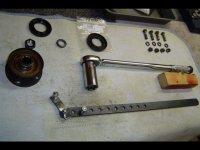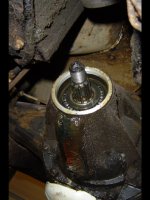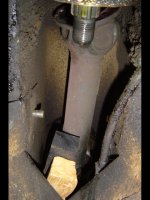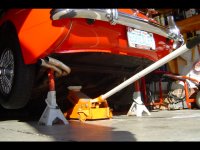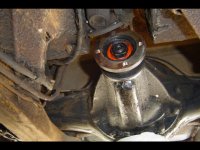That's right Dave, under the big lock washer. After installing the new seal, I put the yoke back in and used the big nut to pull the yoke back into position. As I was pulling the yoke back into position with the nut, I let the yoke turn a little bit so it would work it's way into the new seal without tearing anything up. I oiled up the front of the new seal and the edge of the yoke after the yoke was close to entering the new seal. Once I had the yoke seated all the way in, I removed the big nut. I put some permatex red high temp RTV on my finger and smeared some all around the base of the pinion. I also smeared some on the bottom of the big lock washer and then pushed it down onto the pinion and threaded the nut back on, fastened my steady bar back on and torqued the nut down to 140 ft/lbs . I took some pictures but after I got to working, my hands were too nasty to handel my wifes camera anymore. The 1st shot is of my tools including my steady bar. I had to use the little piece on the end of the bar in order to have enough room for the 1 1/8" socket to make it past my steady bar when it was installed on the yoke flange.
I don't think it will be able to leak out the front from under the washer after doing this.

 Hi Guest!
Hi Guest!

 smilie in place of the real @
smilie in place of the real @
 Pretty Please - add it to our Events forum(s) and add to the calendar! >>
Pretty Please - add it to our Events forum(s) and add to the calendar! >> 

